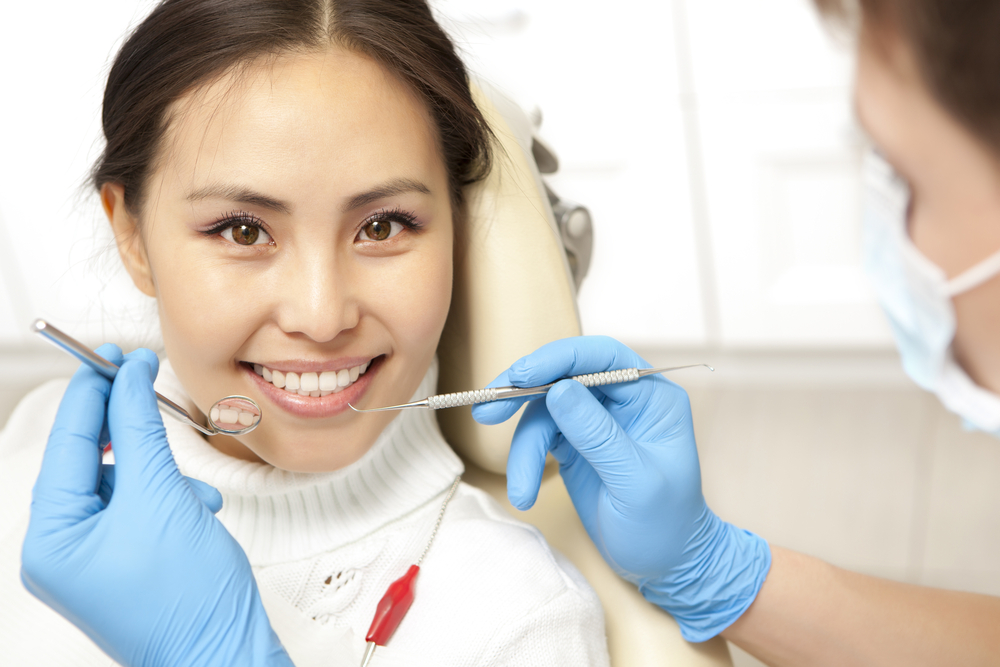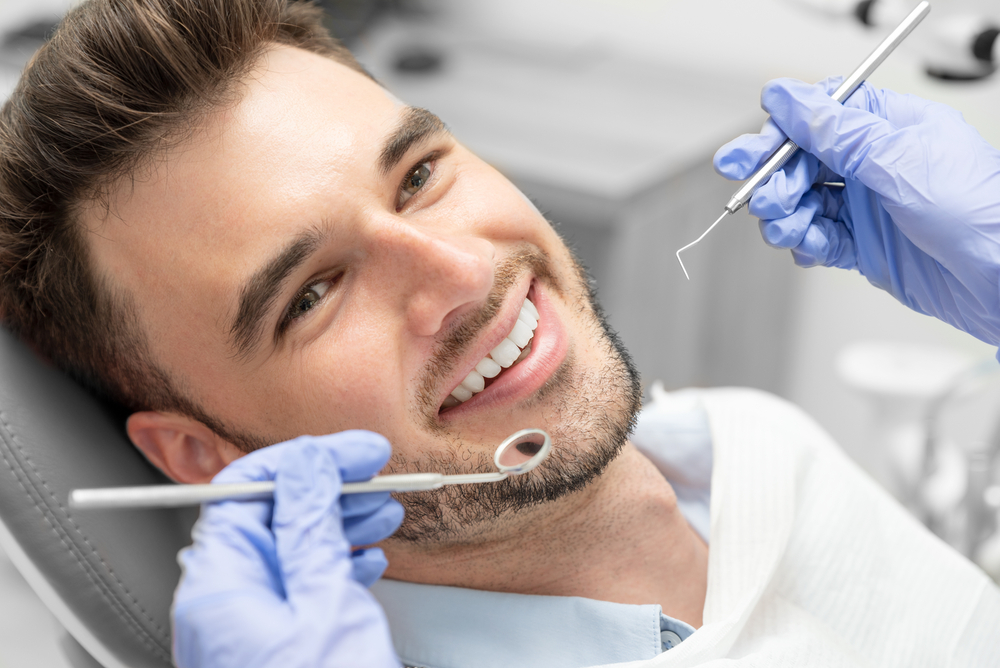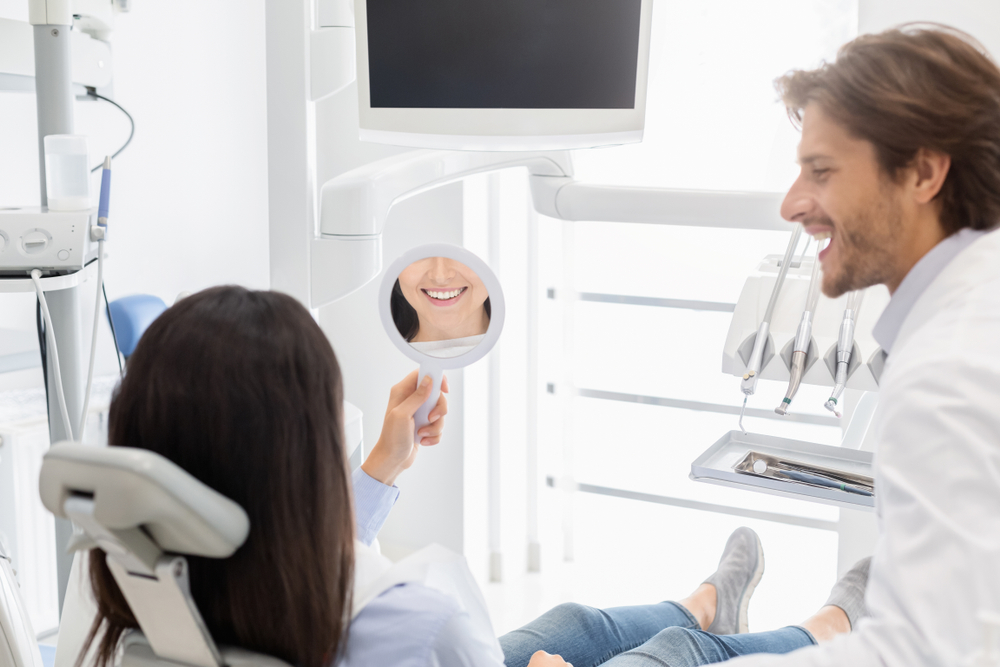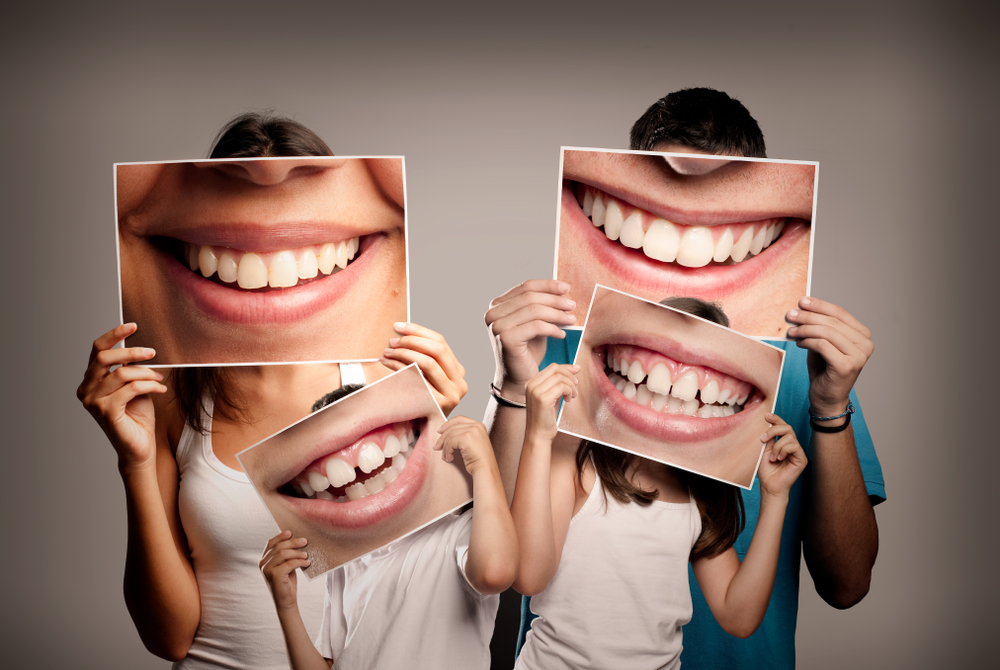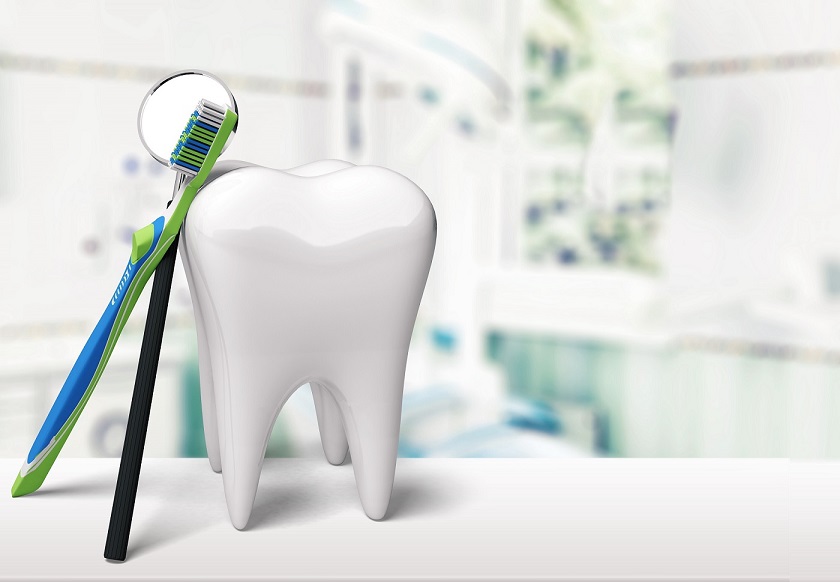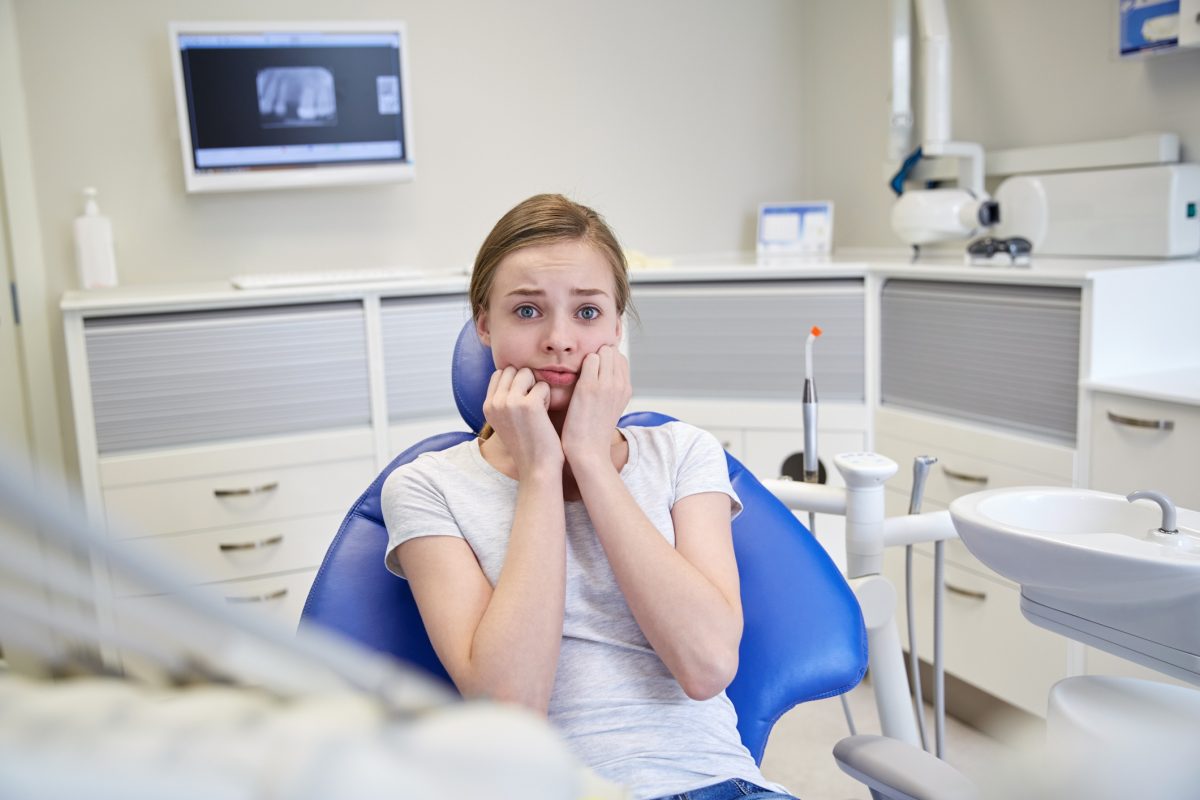Tag: dental cleaning near me
Cost of Dental Exam & Teeth Cleaning in Litchfield MN
What is included in the cost of professional teeth cleaning?
No matter how strict your at-home oral hygiene routine is, there’s no brushing technique that is good enough to prevent the build up and hardening of plaque (tartar), over time. That is why dental professionals recommend that you visit your dentist once or twice a year for professional cleaning and dental examination to assess the condition of your teeth, gums, and mouth. Teeth cleaning or prophylaxis take place above the gums, though your dentist may recommend a deep clean (scaling and root planing below the gumline) if you have gum disease.
Breaking down the cost of teeth cleaning
The national average costs of popular dental services such as exams and cleaning vary from one region to the other, and from dentist to dentist. It also depends on the number of services that will be performed during your visit.
X-ray are only necessary to assess the extent of periodontal disease before deep cleaning or to check for other problems, but are not a must for a preventive procedure like deep cleaning.
Your dentist will determine which of these preventive procedures are necessary based on your dental exam, after which they will be done in a single appointment together with your dental cleaning.
Considering that dental checkups and professional cleaning are affordable for most people, and free for those with a dental insurance plan, they should be performed regularly as recommended by dental professionals, which is every six months, to ensure your optimal oral health.
Types of Dental Cleanings in Litchfield MN
Scheduled professional teeth cleaning is a key component of your preventative dental care to maintain optimal dental health and minimize the risk of gum disease and tooth decay. The American Dental Association recommends that dental cleanings be performed every six months by a dental practitioner. However, some people may require more frequent cleanings depending on their risk factors.
Your dentist may recommend one of the following types of dental cleanings after examining your teeth and gums:
1. Prophylaxis (prophy)
This is commonly referred to as “teeth cleaning”, and involves the removal of accumulated plaque from your teeth, which cannot be removed by regular brushing at home. The process also includes tooth polishing, and should be done every 8 to 16 weeks. Generally, a good candidate for prophylaxis should have firm, pink gums with no bleeding or gum pockets over 3mm.
2. Full Mouth Debridement
If your teeth are not professionally cleaned for more than a year, your teeth may have heavy plaque and tartar (calculus) build-up. In such a case, regular prophylaxis may not be sufficient. So your dental professional may recommend full mouth debridement using hand tools and a micro-ultrasonic scaler to remove the plaque and calculus from your teeth and gums, and restore the health of your mouth.
3. Scaling and Root Planing
Commonly referred to as “deep cleaning”, this procedure is usually recommended for patients who exhibit signs of periodontal disease, such as deeper gum pockets (over 3mm), inflammation and bleeding gums, accumulation of plaque and tartar below the gumline, and/or loss of bone tissue supporting the teeth.
4. Periodontal Maintenance
Following treatment for periodontal disease through scaling and root planing or periodontal surgery, your dental professional may recommend this specialized cleaning every 8 – 12 weeks as part of your periodontal treatment follow up to reduce the risk of gum disease recurrence.
Schedule Your Dental Cleaning Today
The right type of dental cleaning in Litchfield MN will be determined by your dental professional depending on the clinical condition of your teeth and gums, as well as your risk and history of periodontal disease and treatment. Please visit your dentist to discuss your cleaning needs today.
Cost of Dental Exam & Teeth Cleaning in Litchfield MN
Routine dental checkups and professional cleaning form a vital part of preventative oral care. These preventive visits may also include additional services, such as X-rays, fluoride application, cancer examination, and so on depending on your personal dental care needs and your last oral checkup. Combined with a proper at-home oral care routine, these visits help you maintain optimal dental health, reducing the risk of tooth loss and expensive dental procedures.
But how much can you expect to pay for these routine dental visits?
The national average costs of popular dental services such as exams and cleaning vary from one region to the other, and from dentist to dentist.
If you have a dental insurance plan, your cost of preventive care may be considerably lower, or nothing more than your monthly premium. Since dental insurance plans typically emphasise preventative care, most of them cover two annual dental checkups. That said, you should consult your dental insurance company to determine the various dental services covered by your policy, as well as the extent of the coverage.
Final note
Dental insurance can provide savings when receiving preventive care services such as routine exams, professional cleanings, sealants for children, topical fluoride, and x-rays (usually one set per year). The frequency and benefits for each service depend on the type of plan you have, so you should always read the plan details carefully. Even if your employer does not offer dental insurance as a perk, you can purchase an individual or family plan to enjoy reduced cost of most preventive and restorative dental treatments.
Dental Exam & Cleaning Near Me, Litchfield MN
Why should you schedule your exam and cleaning today?
Both the bi-annual exams and cleanings are expected for optimal oral health. Maintaining a strong base for oral health is important to prevent disease or decay. Keeping up with these appointments is vital in obtaining exceptional oral health.
A dental exam is a routine procedure. It is generally quick, easy.
Dental Exam
The exam at your dental appointment consists of a few bites, and one open-wide. That’s it! The process for checking the state of your teeth is rather simple. Depending on what they find during the checkup, they may want to immediately take X-rays as well.
Dental Cleaning
A routine cleaning at the dentist’s office is more effective than any toothbrush. Following the removal of plaque and tartar, your dental practitioner will do deep clean that is possible with a high-powered electric brush. Your dentist will then floss your teeth for you and finish off by giving you a fluoride treatment so that cavities are protected against for months on end! You’ll leave feeling fresh not only in appearance but also internally.
What’s Involved In A Dental Exam & Cleaning? | Litchfield MN
Scheduling your exam and cleaning today will help protect your dental health, which is important in maintaining exceptional oral health. The most basic appointment involves a bi-annual cleaning that maintains the strength of our teeth. Regular appointments are necessary to prevent diseases from occurring, as well as decay on our teeth.
What to Expect
Routine dental exams are generally quick and easy. You’ll likely be in and out of the office within 45 minutes to an hour.
Dental Exam
The exam portion of your appointment is rather easy and a breeze to go through. The dentist checks for dental issues by conducting some “bite downs” and “open wides”, as well as possibly taking X-rays depending on the individual case.
Dental Cleaning
The exam that includes a cleaning is more effective than any toothbrush. Following the removal of plaque and tartar, your dentist will conduct their deepest clean possible with a high-powered electric brush. Your dentist will then floss for you and finish off the session with fluoride treatment which protects teeth against cavities for months on end! You’ll leave looking sharp but also feeling fresh!
3 Types of Dental Cleanings: Which Is Right for Me? Litchfield MN
Your general dentist can provide different types of dental cleanings depending on your unique dental needs. The American Dental Association recommends that you get prophylaxis cleanings at least twice a year. Prophylaxis, which is also referred to as “teeth cleaning”, involves the removal of accumulated plaque from your teeth, which cannot be removed by regular brushing at home.
A good candidate for prophylaxis should have firm, pink gums with no bleeding or gum pockets over 3mm. However, there are various situations that may require you to get a different kind of dental cleaning, such as gum disease, periodontitis, or staying too long between prophylaxis cleanings. Depending on your individual case, your dentist may recommend other types of cleanings such as:
Full Mouth Debridement
If your teeth have heavy plaque and tartar (calculus) build-up, perhaps because you’ve missed a few prophylaxis cleanings, then your dental professional may recommend full mouth debridement using hand tools and a micro-ultrasonic scaler to clean your teeth and restore the health of your mouth. This procedure is typically performed before an oral examination and diagnosis to ensure good visibility of the actual condition of your mouth
Scaling and Root Planing
Commonly referred to as “deep cleaning”, this procedure is recommended for patients who exhibit signs of periodontal disease, such as deeper gum pockets (over 3mm), inflammation and bleeding gums, accumulation of plaque and tartar below the gumline, and/or loss of bone tissue supporting the teeth. This process may require the dental professional to numb the treatment area to avoid sensitivity when scaling and cleaning the roots of your teeth.
Periodontal Maintenance
Periodontal disease is chronic and irreversible. So following initial treatment for periodontal disease through scaling and root planing or periodontal surgery, your dental professional may recommend this specialized cleaning every 8 – 12 weeks as part of your ongoing maintenance to reduce the risk of gum disease recurrence.
Need Dental Cleaning Today?
If you’ve experienced red, tender, bleeding gums, bad breath, or you just want to be proactive about your oral health, then you should contact our office to find out more about your individual dental cleaning in Litchfield MN.
Dental Cleanings Near Me, Litchfield MN
While many dental procedures can be dreadful, teeth cleanings are easily tolerated by most people because they’re not only simple and painless, but also an important part of maintaining your long-term oral health. Ideally, dental cleanings should be performed every 6-12 months to prevent the buildup of plaque and tartar that can cause oral problems such as bad breath, cavities, gum disease, loose teeth, and so on. But your dentist may recommend shorter intervals if you’re at greater risk due to pregnancy, your lifestyle habits, or your general health.
So what exactly happens during a regular dental cleaning?
1. Tartar and Plaque Removal
The actual teeth cleaning process involves the use of specialized tools, such as scalers to remove plaque and calculus from the surface of individual teeth, between the teeth, and around the gum line. This step may take longer if it has been a long time since your last cleaning.
2. Polishing
When all the plaque and tartar has been removed from your teeth, the hygienist will use a special brush with a soft rubber cup. This not only removes any surface stains, but also makes your tooth surface smooth and shiny to make it harder for plaque to form.
3. Expert Flossing
This step helps to thoroughly clean the area between your teeth to remove any leftover plaque and toothpaste from the previous steps.
4. Rinsing
The dental hygienist uses a mouth rinse with liquid fluoride to remove any debris and clean your mouth.
5. Fluoride Treatment
As the final step, your dental hygienist may apply flavored fluoride by putting it in flexible trays that are then placed over your teeth for 30 seconds. This helps to strengthen your teeth and enhance the protection against plaque and calculus.
Following the cleaning, your mouth may feel fresher and your teeth appear brighter. This is because teeth cleaning helps to prevent and treat gum disease and maintain tooth health, but also enhance the appearance of your smile. To learn more about what to expect from a routine dental cleaning in Litchfield MN, please contact our office today.
Teeth Cleaning & Dental Exams in Litchfield MN
Dental cleaning is a simple, painless, and non-invasive preventive dental procedure that seeks to reduce the risk of dental issues such as cavities, gum disease, and bad breath by removing built-up plaque and tartar. Patients often experience some mild vibrations, cooling mist of liquid, and a bit of pressure during scraping, though this doesn’t cause any discomfort. On the contrary, the feeling can be quite satisfying in knowing that you can keep enjoying your healthy teeth and smile for longer.
Ideally, dental cleanings should be performed every six months, but your dental hygienist may recommend shorter intervals if you’re at greater risk due to pregnancy, your lifestyle habits, or your general health. Moreover, if you have gum disease, your dental hygienist may recommend deep scaling – as opposed to regular dental cleaning – to remove plaque from your tooth roots as well.
Generally, the first step before any dental cleaning is an examination of your mouth. The dental hygienist needs to physically check your teeth, gums, tongue, and the entire mouth for any concerns using a small mirror. If there are no problems, then the procedure for dental cleaning may be as follows:
1. Plaque and Tartar Removal: A scaler is used to remove plaque and calculus from the surface of individual teeth, between the teeth, and around the gum line. This step may take longer if it has been a long time since your last cleaning.
2. Polishing: A high-powered brush with a soft rubber cup and gritty toothpaste helps to gently scrub and polish your teeth. This not only removes any surface stains, but also makes your tooth surface smooth and shiny to make it harder for plaque to form.
3. Expert Flossing: This step helps to thoroughly clean the area between your teeth to remove any leftover plaque and toothpaste from the previous steps.
4. Rinsing: The dental hygienist uses a mouth rinse with liquid fluoride to remove any debris and clean your mouth.
5. Fluoride Treatment: As the final step, your dental hygienist may apply flavored fluoride by putting it in flexible trays that are then placed over your teeth for 30 seconds. This helps to strengthen your teeth and enhance the protection against plaque and calculus.
To learn more about what to expect from a Cleaning and Exam in Litchfield MN procedure, please contact your dental office today.
Do I Need A Deep Cleaning for Teeth? Litchfield MN
Dentists recommend different types of dental cleanings to aid in the prevention and/or treatment of dental cavities and/or gum disease. Your dental professional will assess your mouth and recommend the right cleaning for your individual case, as well as the ideal interval for your regular cleanings.
For people with healthy teeth and gums, your dentist may recommend prophylaxis cleanings using fine hand instruments, as well as an ultrasonic scaler and a polishing cup and paste if there are no signs of gum disease. Generally, a good candidate for prophylaxis should have firm, pink gums with no bleeding or gum pockets over 3mm. The American Dental Association (ADA) recommends these cleanings every as part of your preventative dental care to maintain optimal dental health and minimize the risk of gum disease and tooth decay.
Full Mouth Debridement
Prophylaxis should be performed every six months, though some people may require more frequent cleanings depending on their risk factors. In addition, there are some cases where prophylaxis may not sufficiently clean your teeth. If you haven’t been to the dentist in more than a year, heavy plaque and tartar (calculus) may build-up on your teeth.
A full mouth debridement using hand tools and a micro-ultrasonic scaler can be recommended to remove the plaque and calculus from your teeth and gums, and restore the health of your mouth. This procedure is typically performed before an oral examination and diagnosis to ensure good visibility of the actual condition of your mouth
Scaling and Root Planing and Periodontal Maintenance
If you’re suffering from gum disease, your dentist may recommend deep cleaning, which is also known as scaling and root planing. This procedure is for patients who exhibit signs of periodontal disease, such as deeper gum pockets (over 3mm), inflammation and bleeding gums, accumulation of plaque and tartar below the gumline, and/or loss of bone tissue supporting the teeth.
Following your treatment for advanced gum disease, which is a chronic condition, your dentist will recommend periodontal maintenance, which is a specialized cleaning that should be done every 8 – 12 weeks as part of your periodontal treatment follow up to reduce the risk of gum disease recurrence.
Schedule Your Dental Cleaning Today
Receiving dental cleaning is a great way to keep your teeth and gums healthy as a preventive treatment, or as a treatment for gum disease. Please visit your dentist to discuss your dental cleaning in Litchfield MN today.
Dental Cleanings & Checkup in Litchfield MN
At your six-month dental checkup, your dentist should perform dental cleaning as a preventive procedure to maintain healthy teeth and gums. Professional teeth cleaning is necessary to remove accumulated plaque and tartar from in between your teeth and gums, which may be responsible for various oral issues such as cavities, gum disease, bad breath, oral cancer, and so on.
During your routine dental visit, which should be every 6 – 12 months, your dental hygienist will first examine your teeth before cleaning them. The examination involves physical assessment of your teeth, gums, tongue, and the entire mouth for any concerns using a small mirror. If there are any noticeable problems, the dental hygienist will consult the dentist to determine whether it’s safe to proceed with the cleaning. But in some cases, it may be necessary to first clean your teeth and then perform the examination in order to obtain an accurate diagnosis. Your dental professional will determine the right sequence for your specific case.
What to Expect
Routine dental cleaning takes about 30 minutes depending on how long it has been since your last cleaning. This is because plaque will continuously calcify and mineralize on the surface of your teeth to form tartar. During this time, the dental hygienist will:
- Use a scaler to remove plaque and tartar from the surface of individual teeth, between the teeth, and around the gum line.
- Polish the teeth using a high-powered brush with a soft rubber cup. This not only removes any surface stains, but also makes your tooth surface smooth and shiny to make it harder for plaque to form.
- Perform professional flossing in order to thoroughly clean the area between your teeth to remove any leftover plaque and toothpaste from the previous steps.
- Rinse your mouth using a solution containing liquid fluoride to remove any debris and clean your mouth.
- Apply flavored fluoride by putting it in flexible trays that are then placed over your teeth for 30 seconds. This helps to strengthen your teeth and enhance the protection against plaque and calculus.
Schedule Your Appointment
While many dental procedures can be dreadful, teeth cleanings are easily tolerated by most people because they’re not only simple and painless, but also an important part of maintaining your long-term oral health. To learn more about what to expect from a routine dental cleaning in Litchfield MN, please contact our office today.

6 Month Smiles
Six Month Smiles is a short term orthodontic treatment that involves wearing clear braces to straighten and improve tooth alignment. This alternative treatment is a convenient approach to a straighter smile without the time commitment.
Learn more

